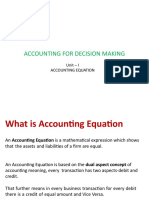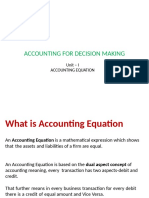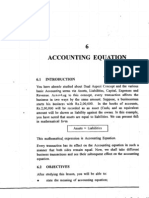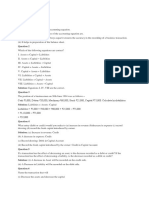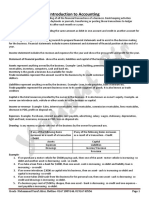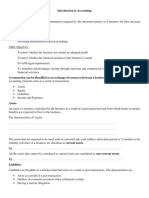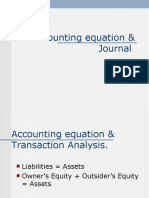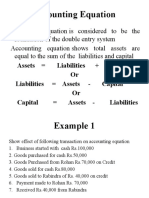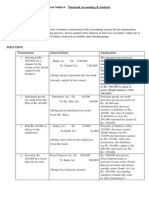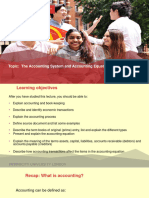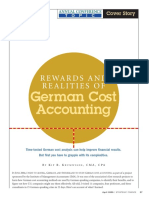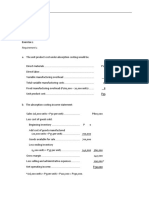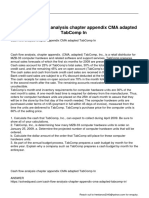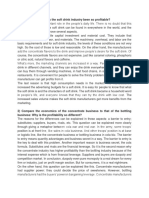0% found this document useful (0 votes)
94 views34 pagesDouble Entry System & Accounting Equation: by - Mrs. Dilshad D. Jalnawalla
1. The key aspects of the double entry system and accounting equation are introduced. Under the double entry system, every transaction has two equal aspects - a debit and a credit.
2. The accounting equation states that assets always equal liabilities plus owners' equity. It forms the foundation of double entry bookkeeping.
3. Several examples are provided to demonstrate calculating accounts based on the accounting equation, such as calculating total assets, capital, or liabilities given values for other accounts.
Uploaded by
Tufail GanaieCopyright
© Attribution Non-Commercial (BY-NC)
We take content rights seriously. If you suspect this is your content, claim it here.
Available Formats
Download as PPT, PDF, TXT or read online on Scribd
0% found this document useful (0 votes)
94 views34 pagesDouble Entry System & Accounting Equation: by - Mrs. Dilshad D. Jalnawalla
1. The key aspects of the double entry system and accounting equation are introduced. Under the double entry system, every transaction has two equal aspects - a debit and a credit.
2. The accounting equation states that assets always equal liabilities plus owners' equity. It forms the foundation of double entry bookkeeping.
3. Several examples are provided to demonstrate calculating accounts based on the accounting equation, such as calculating total assets, capital, or liabilities given values for other accounts.
Uploaded by
Tufail GanaieCopyright
© Attribution Non-Commercial (BY-NC)
We take content rights seriously. If you suspect this is your content, claim it here.
Available Formats
Download as PPT, PDF, TXT or read online on Scribd
/ 34









